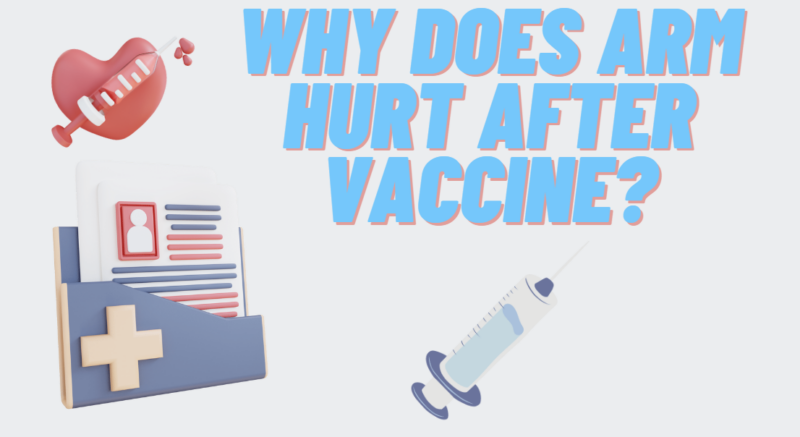Vaccines have been a cornerstone of public health for decades, protecting us from a myriad of diseases. Yet, a common side effect that many experience post-vaccination is arm pain. Why does this happen?
Before scrolling down, do you know what countries will be banning the HPV vaccine? What are your thoughts on this?
The Science Behind Vaccines
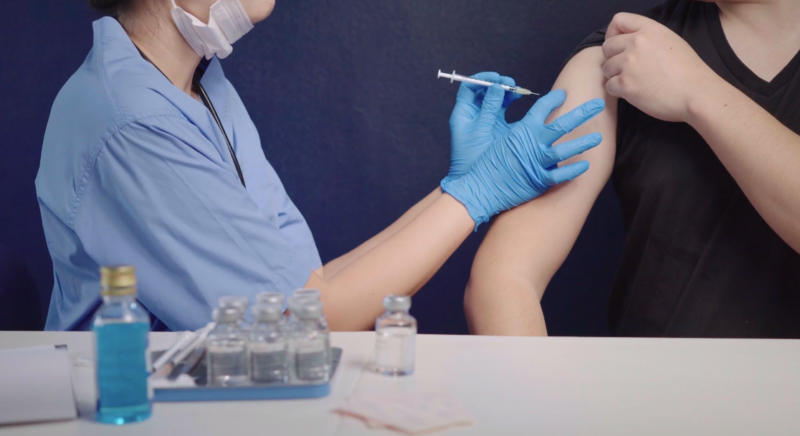
Vaccines are a marvel of modern medicine, providing us with protection against various diseases. But what exactly goes on when that needle pierces your skin?
The Immune Response
When you receive a vaccine, your body is introduced to a harmless piece of the virus or bacteria, often in the form of a protein or a dead or weakened version of the pathogen. This prompts your immune system to spring into action.
- Recognition: Your immune cells recognize this foreign invader and start producing antibodies.
- Defense: These antibodies then help neutralize the threat, ensuring you’re protected if you ever encounter the real pathogen.
However, this immune response can also lead to inflammation at the injection site, causing pain and discomfort.
The Role of Adjuvants
Some vaccines contain substances called adjuvants that help boost the body’s immune response to the vaccine.
- Enhancement: Adjuvants enhance the body’s immune response, ensuring long-lasting protection.
- Stimulation: They stimulate the immune system, leading to a more robust defense against the disease.
This heightened immune response can sometimes result in pain at the injection site, as the body works overtime to process the vaccine.
Why Pain Occurs?
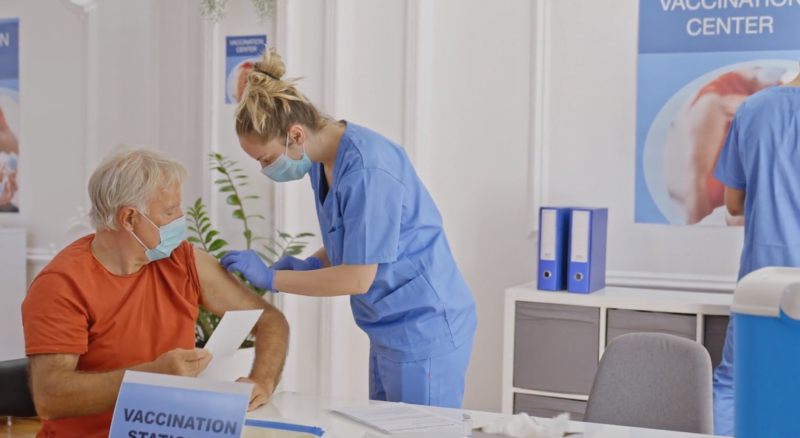
While the immune response plays a significant role, there are other factors at play when it comes to post-vaccination arm pain.
The Needle’s Role
The very act of getting a shot can contribute to the pain you feel afterward.
- Muscle Trauma: The needle can cause minor trauma to the muscle, leading to soreness.
- Vaccine Volume: Some vaccines have a larger volume, meaning more liquid is injected into the muscle, stretching it and causing discomfort.
Individual Differences
Everyone’s body is unique, and our reactions to vaccines can vary based on several factors.
- Pain Threshold: Some people naturally have a lower pain threshold and may feel more discomfort.
- Previous Experiences: If you’ve had reactions to shots in the past, you might be more sensitive or anxious, amplifying the pain.
Tips to Alleviate Pain
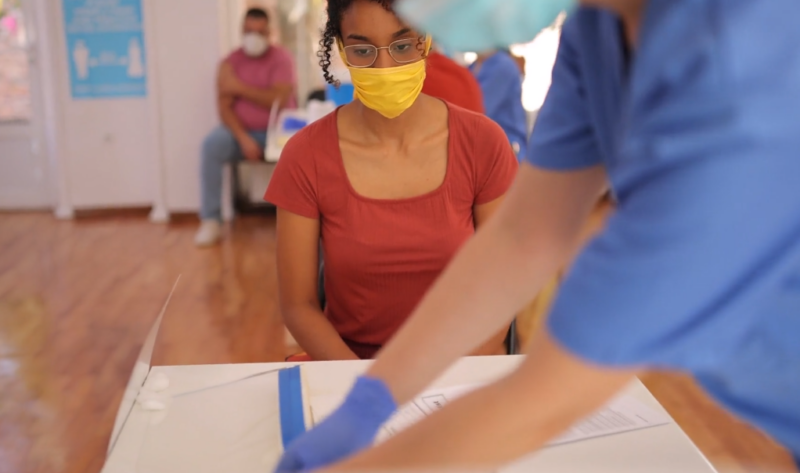
Experiencing pain after a vaccine is normal, but there are steps you can take to alleviate it.
Cold Compress
Applying a cold compress to the injection site can help reduce inflammation and numb the area.
- Immediate Relief: The cold can provide immediate relief from the burning or stinging sensation.
- Reduced Swelling: It can also help reduce any swelling that might occur.
Gentle Movement
While it might seem counterintuitive, moving your arm can help reduce stiffness and improve blood flow.
- Increased Circulation: Gentle movement increases circulation, helping to disperse any vaccine components that might be causing irritation.
- Reduced Stiffness: It can also prevent your arm from becoming too stiff, reducing pain in the long run.
Over-the-Counter Pain Relievers
If the pain is particularly bothersome, over-the-counter pain relievers can help. However, always consult with a healthcare professional before taking any medication.
- Pain Reduction: Medications like ibuprofen or acetaminophen can help reduce pain and inflammation.
- Safety First: Always follow the recommended dosage and ensure there are no contraindications with other medications you might be taking.
Psychological Aspects of Pain

Often, our perception of pain is influenced not just by the physical factors but also by psychological elements. Understanding these can provide a more holistic view of post-vaccination discomfort.
The Power of Anticipation
The mere thought of getting a shot can induce anxiety in many individuals.
- Fear of Needles: A significant portion of the population has trypanophobia, or a fear of needles. This anxiety can heighten the perception of pain.
- Expectation: If you’re expecting the shot to hurt, you might be more sensitive to any discomfort, making it feel more intense than it actually is.
The Placebo Effect
Believe it or not, our beliefs about a treatment can influence its outcomes.
- Mind Over Matter: If you believe that a shot will cause significant pain, you might experience more pain, even if the shot itself isn’t particularly painful.
- Positive Thinking: Conversely, if you believe that you’ll be fine after the shot, you might experience less pain. This is a testament to the power of the mind.
Social Influences
The people around us and societal perceptions can also play a role in how we experience pain.
- Shared Experiences: Hearing others talk about their painful experiences with vaccines can influence our own perceptions.
- Cultural Norms: In some cultures, showing pain might be seen as a sign of weakness, leading individuals to downplay their discomfort.
Focus on Benefits
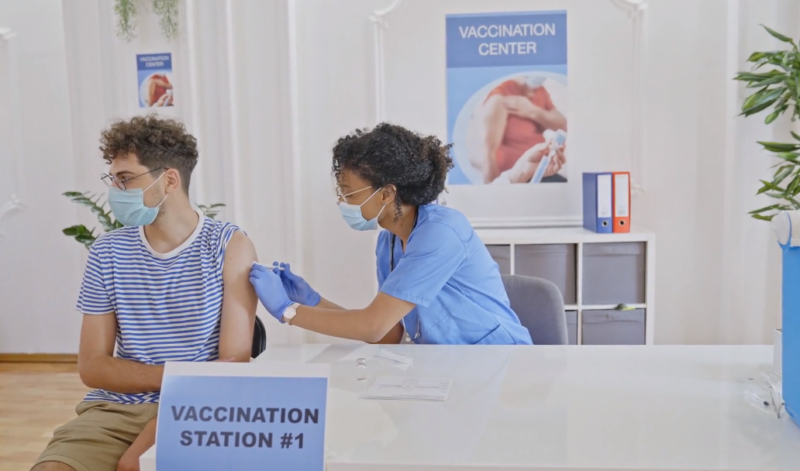
While the focus of this article is understanding the pain, it’s essential to zoom out and look at the broader benefits of vaccines.
Lifesaving Protection
Vaccines have saved countless lives over the years by providing immunity against deadly diseases.
- Eradication of Diseases: Diseases like smallpox have been completely eradicated thanks to vaccines.
- Prevention: They prevent severe illnesses, complications, and deaths from diseases like measles, polio, and influenza.
Community Immunity
When a significant portion of the population is vaccinated, it provides protection even to those who aren’t.
- Herd Immunity: This concept means that when enough people are immune to a disease, its spread is slowed or stopped, protecting the community.
- Protecting the Vulnerable: This is especially important for those who can’t get vaccinated, like individuals with certain medical conditions or weakened immune systems.
Economic Benefits
Vaccines also have broader economic implications.
- Reduced Healthcare Costs: By preventing diseases, vaccines reduce the burden on the healthcare system, leading to savings.
- Increased Productivity: Healthy individuals can contribute more to the economy, leading to growth and prosperity.
Misconceptions and Myths
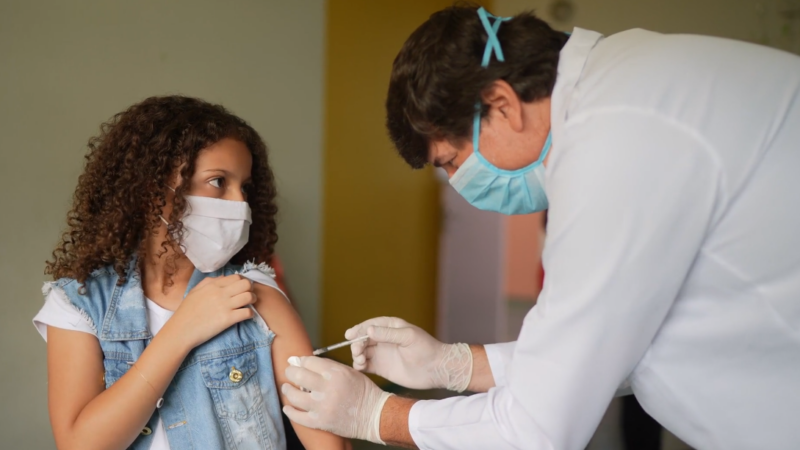
Vaccines Cause More Harm Than Good
Fact: There is solid medical and scientific evidence that the benefits of vaccines far outweigh the risks.
Over the years, concerns about vaccine safety have been thoroughly investigated and resolved, reinforcing the importance and safety of vaccinations.
Vaccines Could Cause Long-Term Diseases
Fact: Some conspiracy theories suggest that vaccines can cause long-term diseases or conditions. However, extensive research and studies have shown no correlation between vaccines and conditions like Multiple Sclerosis or Guillain-Barré Syndrome.
For instance, concerns about the Hepatitis B vaccine causing Multiple Sclerosis in 1998 were investigated and debunked.
The Pain from Vaccines is Due to Harmful Ingredients
Fact: The pain experienced after vaccination is typically due to the body’s immune response and, in some cases, the physical act of the injection.
It is not because of “harmful” ingredients in the vaccine. Vaccines undergo rigorous testing to ensure their safety and efficacy.
Long History Conspiracy Theories
There are various reasons why people fall for these myths, such as lack of knowledge, fear, or by the influence of misinformation. Here are the biggest ones seen in public health area.
- Simian Virus 40 (SV40): Between 1955 and 1963, there were concerns about the Simian Virus 40 (SV40) being present in polio vaccines. However, subsequent studies found no increased risk of cancer in individuals who received the vaccine.
- Swine Flu Vaccine and Guillain-Barré Syndrome: In 1976, there were concerns about a potential link between the Swine Flu vaccine and Guillain-Barré Syndrome. While there was a slight increased risk, the benefits of vaccination far outweighed the risks.
- Rotavirus Vaccine and Intussusception: Concerns arose between 1998 and 1999 about a potential link between the Rotavirus vaccine and intussusception, a type of bowel obstruction. The vaccine in question was withdrawn, and newer versions have since been developed with improved safety profiles.
- And, also, we have to mention the most recent events, when we could face a big rise in doubts over COVID-19 vaccines. We could hear a lot of different claims where people were talking about negative effects, and how they could be even worse than getting infected by a strain of coronavirus.
However, you must get information only from reputable sources. That is the best way to keep you and your family safe and healthy.
A group of scientists released a research on sciencedirect.com. This case study provides an in-depth analysis of the post-vaccination experiences.
“A total of 1,180 vaccinated people participated in the study. Only 39.48% of the participants reported at least one side effect after receiving their COVID-19 vaccine. Injection-site pain, fever, headache, redness/swelling at the injection site, and lethargy were the most commonly reported adverse effects, all of which were mild and lasted 1–3 days.”
FAQs
Are all vaccines made using the same method and ingredients?
No, vaccines are developed using various methods, and their ingredients can differ. For instance, some vaccines use a weakened form of the virus, while others might use a protein piece of the virus.
If I didn’t experience pain after getting a vaccine, does that mean it didn’t work?
No, the absence of pain doesn’t indicate the vaccine’s effectiveness. Everyone’s body reacts differently, and some might not experience any noticeable side effects.
Why do some vaccines require multiple doses?
Some vaccines need multiple doses to ensure long-lasting immunity. The first dose introduces the immune system to the pathogen, and subsequent doses strengthen and prolong the immune response.
Are there any long-term side effects of vaccines that might appear years after vaccination?
Most vaccine side effects appear shortly after the vaccination and are temporary. Long-term side effects are extremely rare, and vaccines undergo rigorous testing to ensure their safety over time.
How do health organizations monitor the safety of vaccines after they are released to the public?
Health organizations use various monitoring systems to track the safety of vaccines. They collect and analyze data on any adverse events or side effects reported after vaccination to ensure ongoing safety.
Can I get the disease from the vaccine itself?
No, vaccines are designed to give you immunity without causing the disease. Some vaccines use a weakened or inactive form of the virus or bacteria, which cannot cause the disease.
Summary
It’s clear that while the pain after a vaccine can be a temporary inconvenience, the long-term benefits far outweigh this minor discomfort. By understanding the reasons behind the pain and the broader context, we can approach vaccinations with informed confidence, knowing we’re doing our part for our health and the well-being of our communities.
